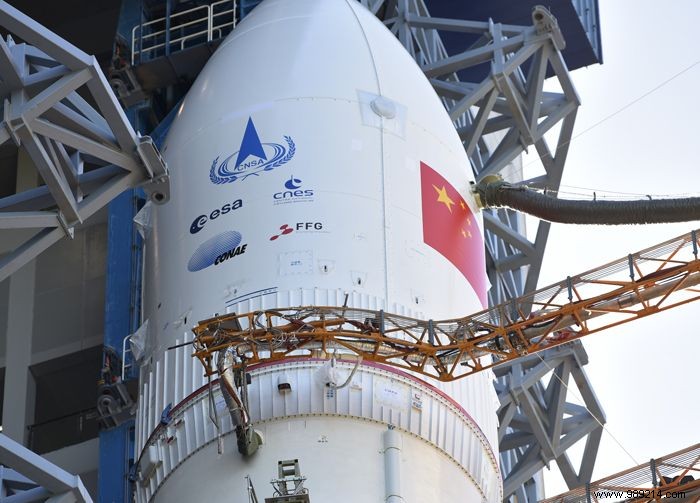A new document published by the Chinese space agency brings new details about the Tianwen-1 mission, which plans to send a rover to Mars. If no official date has yet been communicated, the launch could take place this Thursday.
On July 19, a Japanese rocket launched Hope, the first Mars mission from the United Arab Emirates (UAE). The operation went perfectly. As a reminder, the objective of this mission will be to study the meteorological conditions of the red planet.
The UAE has therefore just got the ball rolling, with the dispatch of the first of three missions scheduled to be deployed this summer to Mars.
While we will have to wait a few more days before the launch of the American mission, scheduled after July 30, that of the Chinese mission Tianwen-1 seems imminent. According to some experts, based on the deployment of the Long March 5 launcher, it could actually take place this Thursday, July 23 from the base in Wenchang, Hainan Island.
In the meantime, a new paper published in the journal Nature Astronomy by the Chinese National Space Agency (CNSA) tells us a little more about the mission.
The rover is normally said to run for about 90 Martian sols (about 40 minutes longer than an Earth day). Its main objective will be to probe the distribution of water ice in basements.
The orbiter, for its part, will relay the information exchanged between operators on Earth and the rover itself. It must also conduct its own scientific observations in parallel for one Martian year (about 687 Earth days). Its main objective will be to map the geological structure of Mars.
The spacecraft, like the Hope probe and the American rover Perseverance, should reach Mars in February 2021 . However, the Chinese rover will remain attached to its orbiter for two to three months before attempting a landing, the document says.

In recent months, two landing sites have been favored:Chryse Planitia and Utopia Planitia . These two environments have the advantage of being at low altitudes, which maximizes braking capacity during landing . They also appear very smooth, which can make it easier for the rover to evolve. Finally, these two sites offer sufficient sunshine to power the various photovoltaic systems.
Finally, the mission leaders set their sights on Utopia Planitia . This vast plain which extends in the northern hemisphere for approximately 3,200 km has already been explored by the United States as part of the Viking 2 mission. , in 1976. The precise area of the landing, on the other hand, was not communicated.
Note that if successful, this will be a first for China. From then on, the surface of Mars will no longer be an exclusively American territory.